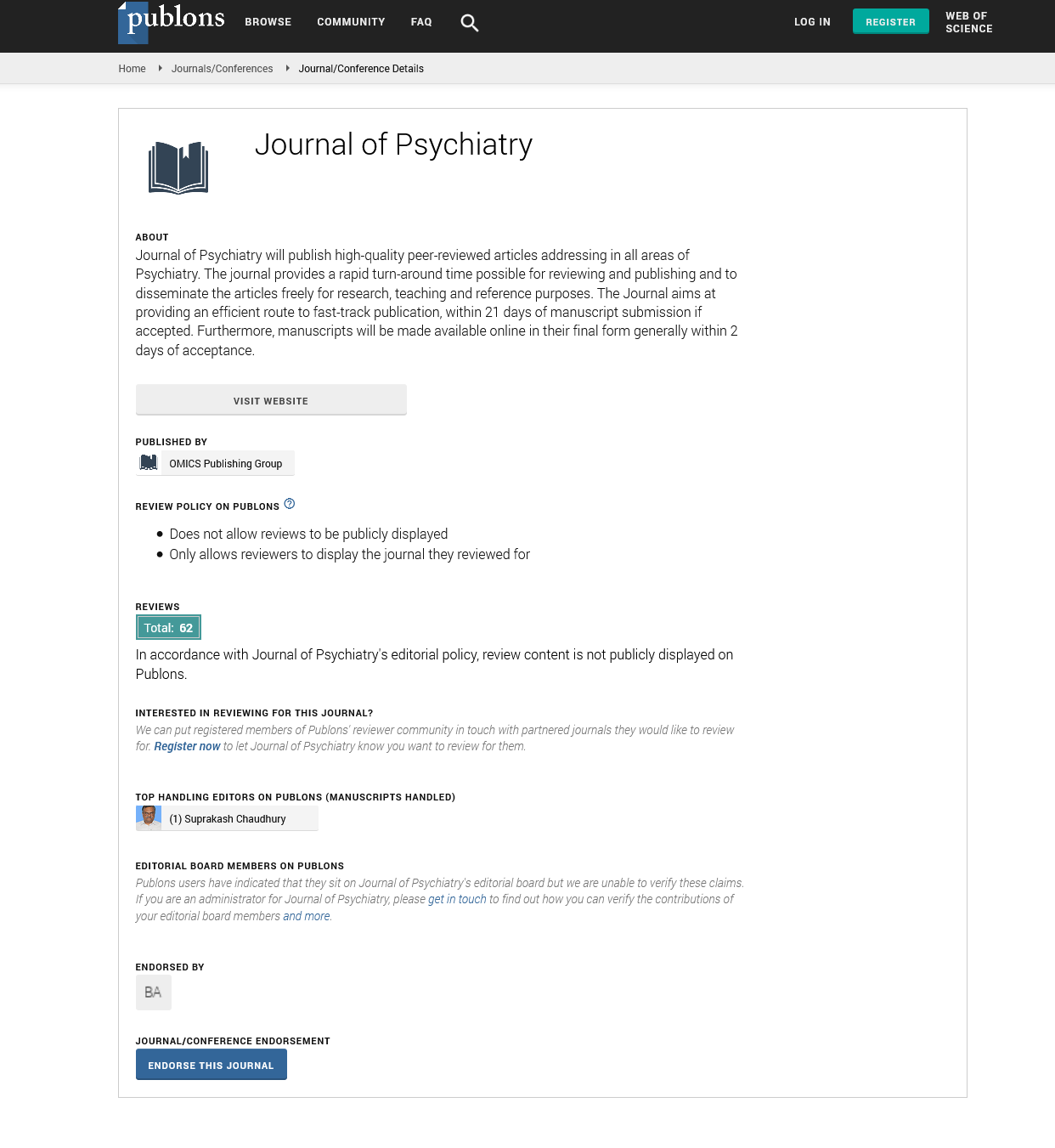Indexed In
- RefSeek
- Hamdard University
- EBSCO A-Z
- OCLC- WorldCat
- SWB online catalog
- Publons
- International committee of medical journals editors (ICMJE)
- Geneva Foundation for Medical Education and Research
Useful Links
Share This Page
Open Access Journals
- Agri and Aquaculture
- Biochemistry
- Bioinformatics & Systems Biology
- Business & Management
- Chemistry
- Clinical Sciences
- Engineering
- Food & Nutrition
- General Science
- Genetics & Molecular Biology
- Immunology & Microbiology
- Medical Sciences
- Neuroscience & Psychology
- Nursing & Health Care
- Pharmaceutical Sciences
Abstract
Usefulness of and Factors Associated with Global Assessment Scale (GAS) Scores in Suicide Attempters
Miki Umetsu, Kotaro Otsuka, Jin Endo, Yasuhito Yoshioka, Fumito Koizumi, Ayumi Mizugai, Yoshifumi Onuma, Toshinari Mita, Kaoru Kudo, Katsumi Sanjo, Kentaro Fukumoto, Hikaru Nakamura, Akio Sakai and Sigeatsu Endo
Background: The purpose of this study is to determine, by classifying emergently admitted suicide attempter patients according to their Global Assessment Scale (GAS) scores, the characteristics of and factors associated with each group of patients. Methods: The subjects of this study were 1,317 suicide attempters who were seen at the primary/secondary emergency department of the Iwate Medical University Hospital and at the Iwate Advanced Critical Care and Emergency Center, during the period of 7 years from April 1, 2006. These subjects were classified into three groups, consisting of the low, middle and high score groups, and were analyzed by comparing these groups with each other in terms of background factors and psychiatric assessment of emergency psychiatry case cards. Comparison examination was performed among 3 groups, and multiple logistic regression analysis was performed by using investigation items and the three GAS score groups as explanatory and dependent variables, respectively Results: Factors associated with the low score group included being male, advanced age and unemployed, and high life event values. The odds of completed suicide in this group were more than 5-fold higher than in the other two groups. Past history of suicide attempts was extracted as a factor associated with the middle score group. Factors associated with the high score group included: being female; young age; having no history of regular psychiatric visits; having history of advice seeking prior to the attempted suicide; and complex motives. Conclusions: This paper determined characteristics of emergently admitted suicide attempters according to their GAS score levels, and proposed specific measures to be taken according to individual patients’ GAS scores. It was suggested that in an emergency setting involving a suicide attempter, a global assessment of the patient and treatment given according to the assessment results may lead to the prevention of further suicide attempts.

